Human Physiology Integrated Approach 7th Edition Silverthorn Test Bank
$38.00
Human Physiology Integrated Approach 7th Edition Silverthorn Test Bank Download
- Description
- Reviews (0)
Description
You will receive this product immediate after placing the order
All resources are in electronic format and can be downloaded from your account or email – How to Download. Payments will be processed instantly after checkout. Please note that all sales are final and non refundable. If you still have questions, find answers on our FAQ page or just send us an email at inquiry@testbanksafe.com, we will respond as soon as possible.
Human Physiology: An Integrated Approach, 7e, (Silverthorn)
Chapter 3 Compartmentation: Cells and Tissues
1) When cancer develops in one tissue and spreads to another via the blood or the lymph, the cancer is said to have undergone what process?
A) differentiation
B) metastasis
C) cytokinesis
D) mutation
Answer: B
Section: Functional Compartments of the Body
Learning Outcome: 3.1
Bloom’s Taxonomy: Comprehension
2) The space that is surrounded by the tissue wall of hollow organs is known as the
A) peritoneal cavity.
B) lumen.
C) extracellular space.
D) epidural space.
E) tract.
Answer: B
Section: Functional Compartments of the Body
Learning Outcome: 3.1
Bloom’s Taxonomy: Comprehension
3) The lumen of a hollow organ such as the stomach is considered to be part of the ________ environment.
A) internal
B) external
Answer: B
Section: Functional Compartments of the Body
Learning Outcome: 3.1
Bloom’s Taxonomy: Comprehension
4) The watery medium that surrounds a cell is known as
A) cytosol.
B) protoplasm.
C) extracellular fluid.
D) cytoplasm.
E) plasma.
Answer: C
Section: Functional Compartments of the Body
Learning Outcome: 3.1
Bloom’s Taxonomy: Comprehension
5) Which of the following terms is NOT used to define the structure that separates the contents of a human cell from its surrounding medium?
A) a cell wall
B) a cell membrane
C) plasma membrane
D) plasmalemma
E) All of the answers are correct.
Answer: A
Section: Biological Membranes
Learning Outcome: 3.2
Bloom’s Taxonomy: Knowledge
6) Which of the following is NOT a function of membrane proteins?
A) respond to extracellular molecules
B) creating junctions between cells
C) act as transport molecules for various solutes
D) anchor or stabilize the cell membrane
E) produce energy
Answer: E
Section: Biological Membranes
Learning Outcome: 3.3
Bloom’s Taxonomy: Knowledge
7) Cell membranes are said to be
A) impermeable barrier.
B) freely permeable barrier.
C) selectively permeable barrier.
D) only permeable to water soluble molecules.
E) None of the answers are correct.
Answer: C
Section: Biological Membranes
Learning Outcome: 3.2
Bloom’s Taxonomy: Knowledge
8) What is/are the major role(s) of the phospholipid bilayer in the cellular membrane?
A) the absorption of fats only
B) the formation of a barrier that is selectively permeable to lipid-soluble molecules only
C) to provide a framework for membrane proteins only
D) to carry water-soluble molecules through a hydrophobic environment only
E) the formation of a barrier that is a selective for lipid-soluble molecules and to provide a framework for membrane proteins
Answer: E
Section: Biological Membranes
Learning Outcome: 3.2
Bloom’s Taxonomy: Comprehension
9) Which of the following is NOT a membrane lipid?
A) sphingolipids
B) cholesterol
C) phospholipids
D) All are membrane lipids.
Answer: D
Section: Biological Membranes
Learning Outcome: 3.3
Bloom’s Taxonomy: Knowledge
10) Which structure is a lipid bilayer that controls which objects can leave or enter the cell?
A) endoplasmic reticulum
B) Golgi apparatus
C) nucleus
D) plasma membrane
E) ribosome
Answer: D
Section: Biological Membranes
Learning Outcome: 3.2
Bloom’s Taxonomy: Knowledge
11) A liposome is
A) only an additive to creams and lotions.
B) only a drug-delivery vehicle.
C) only a type of lipid.
D) only a structural component of cell membranes.
E) an additive to creams and lotions and a drug-delivery vehicle.
Answer: E
Section: Intracellular Compartments
Learning Outcome: 3.4
Bloom’s Taxonomy: Comprehension
12) An immunoliposome is a liposome that
A) suppresses the immune system.
B) stimulates the immune system.
C) can recognize cancer cells.
D) None of the answers are correct.
Answer: C
Section: Intracellular Compartments
Learning Outcome: 3.4
Bloom’s Taxonomy: Knowledge
13) Intermediate filaments
A) provide the cell with strength.
B) stabilize the position of organelles.
C) transport materials within the cytoplasm.
D) form the neurofilaments in nerve cells.
E) All of the answers are correct.
Answer: E
Section: Intracellular Compartments
Learning Outcome: 3.7
Bloom’s Taxonomy: Comprehension
14) Which proteins assist in the movement of vesicles along microtubules?
A) kinesins
B) mitochondria
C) rough endoplasmic reticulum
D) ribosomes
E) Golgi complex
Answer: A
Section: Intracellular Compartments
Learning Outcome: 3.10
Bloom’s Taxonomy: Knowledge
15) Which of the following is an example of a membranous organelle?
A) lysosome
B) cilia
C) centriole
D) ribosome
E) cytoskeleton
Answer: A
Section: Intracellular Compartments
Learning Outcome: 3.6
Bloom’s Taxonomy: Knowledge
16) The thickest protein fibers from the following group are
A) microtubules.
B) neurofilaments.
C) microfilaments.
D) myosin molecules.
E) keratin filaments.
Answer: A
Section: Intracellular Compartments
Learning Outcome: 3.7
Bloom’s Taxonomy: Knowledge
17) Ribosomal RNA is formed by
A) the endoplasmic reticulum.
B) Golgi complexes.
C) lysosomes.
D) mitochondria.
E) nucleoli.
Answer: E
Section: Intracellular Compartments
Learning Outcome: 3.5
Bloom’s Taxonomy: Comprehension
18) Each of the following statements concerning mitochondria is true EXCEPT one. Identify the exception.
A) The mitochondrial cristae form the inner membrane forming separate compartments.
B) The matrix of the mitochondria contains metabolic enzymes involved in energy production.
C) The intermembrane space plays an important role in mitochondrial ATP production.
D) The mitochondria contain no DNA or RNA.
E) The mitochondria produce most of a cell’s ATP.
Answer: D
Section: Intracellular Compartments
Learning Outcome: 3.6
Bloom’s Taxonomy: Knowledge
19) In humans, only ________ cells have flagella.
A) respiratory tract lining
B) intestine lining
C) stomach lining
D) sperm
E) uterine tube lining
Answer: D
Section: Intracellular Compartments
Learning Outcome: 3.8
Bloom’s Taxonomy: Knowledge
20) Tay-Sachs is a disease caused by having ineffective
A) mitochondria.
B) Golgi bodies.
C) lysosomes.
D) rough endoplasmic reticulum.
E) smooth endoplasmic reticulum.
Answer: C
Section: Intracellular Compartments
Learning Outcome: 3.6
Bloom’s Taxonomy: Knowledge
21) Microvilli are found
A) mostly in muscle cells.
B) on the inside of cell membranes.
C) in large numbers on cells that secrete hormones.
D) in cells that are actively engaged in absorption.
E) only on cells lining the reproductive tract.
Answer: D
Section: Intracellular Compartments
Learning Outcome: 3.9
Bloom’s Taxonomy: Comprehension
22) Microtubules
A) are composed of tubulin.
B) are hollow, filamentous structures.
C) form cilia that aid in cell movement.
D) are the largest cytoplasmic fibers.
E) All of the answers are correct.
Answer: E
Section: Intracellular Compartments
Learning Outcome: 3.7
Bloom’s Taxonomy: Knowledge
23) Centrioles
A) function as pipelines to move fluid through the cell.
B) direct the movement of DNA during cell division.
C) hold the cell’s ribosomes in place.
D) are white blood cells out of vessels.
E) provide shape and stability to a cell.
Answer: B
Section: Intracellular Compartments
Learning Outcome: 3.7
Bloom’s Taxonomy: Knowledge
24) Most of the ATP required to power cellular operations is produced in the
A) ribosomes.
B) endoplasmic reticulum.
C) nucleus.
D) mitochondria.
E) Golgi apparatus.
Answer: D
Section: Intracellular Compartments
Learning Outcome: 3.6
Bloom’s Taxonomy: Knowledge
25) Which does NOT accurately complete the sentence? One of the major functions of BOTH types of endoplasmic reticulum (ER) is the
A) synthesis of biomolecules.
B) storage of genetic material for the cell.
C) transport of biomolecules.
D) storage of biomolecules.
Answer: B
Section: Intracellular Compartments
Learning Outcome: 3.6
Bloom’s Taxonomy: Knowledge
26) All of the following are synthesized along various sites of the endoplasmic reticulum EXCEPT one. Identify the exception.
A) proteins
B) fatty acids
C) steroids
D) RNA
E) phospholipids
Answer: D
Section: Intracellular Compartments
Learning Outcome: 3.6
Bloom’s Taxonomy: Knowledge
27) Which of the following is NOT a molecule synthesized in the smooth endoplasmic reticulum (SER)?
A) fatty acids
B) steroids
C) proteins
D) lipids
E) All are synthesized in the SER.
Answer: C
Section: Intracellular Compartments
Learning Outcome: 3.6
Bloom’s Taxonomy: Knowledge
28) Which of the following consists of a network of intracellular membranes with attached ribosomes?
A) rough endoplasmic reticulum
B) smooth endoplasmic reticulum
C) mitochondria
D) nucleoli
E) Golgi apparatus
Answer: A
Section: Intracellular Compartments
Learning Outcome: 3.6
Bloom’s Taxonomy: Comprehension
29) All of the structures listed below are involved in storage, EXCEPT
A) lysosomes.
B) peroxisomes.
C) mitochondrial cristae.
D) storage vesicles.
E) All are involved in cellular storage.
Answer: C
Section: Intracellular Compartments
Learning Outcome: 3.6
Bloom’s Taxonomy: Knowledge
30) The proteins synthesized in the rough endoplasmic reticulum are then sent to the
A) smooth endoplasmic reticulum for storage.
B) Golgi complex for packaging.
C) lysosome for modification.
D) cell membrane for secretion.
E) nucleus for cellular use.
Answer: B
Section: Intracellular Compartments
Learning Outcome: 3.12
Bloom’s Taxonomy: Comprehension
31) If a cell lacked lysosomes, it would not be able to
A) synthesize lipids.
B) produce enzymes.
C) digest cellular wastes and bacteria.
D) destroy H2O2.
E) transport water-soluble molecules.
Answer: C
Section: Intracellular Compartments
Learning Outcome: 3.6
Bloom’s Taxonomy: Comprehension
32) Which substance is responsible for activating the digestive enzymes inside lysosomes?
A) air
B) water
C) acid
D) enzymes
E) base
Answer: C
Section: Intracellular Compartments
Learning Outcome: 3.6
Bloom’s Taxonomy: Knowledge
33) Peroxisomes
A) use an enzyme to destroy H2O2 that is toxic to the cell.
B) are a type of lysosome.
C) are responsible for the atrophy of unused muscles.
D) are sites for synthesis of fatty acids, steroids, and phospholipids.
E) All of the answers accurately describe peroxisomes.
Answer: A
Section: Intracellular Compartments
Learning Outcome: 3.12
Bloom’s Taxonomy: Comprehension
34) The number of mitochondria in skeletal muscle cells is ________ adipose (fat) cells.
A) greater than
B) less than
C) equal to
Answer: A
Section: Intracellular Compartments
Learning Outcome: 3.6
Bloom’s Taxonomy: Comprehension
35) The control center for cellular operations is the
A) nucleus.
B) mitochondria.
C) Golgi complex.
D) endoplasmic reticulum.
E) ribosomes.
Answer: A
Section: Intracellular Compartments
Learning Outcome: 3.11
Bloom’s Taxonomy: Knowledge
36) The beta cells of the pancreas produce insulin, a protein-based hormone. Which of the following organelles would be found in higher levels in the beta cells?
A) mitochondria
B) ribosomes
C) microvilli
D) lysosomes
Answer: B
Section: Intracellular Compartments
Learning Outcome: 3.12
Bloom’s Taxonomy: Application
37) If the adrenal cortex produces lipid-based hormones such as aldosterone, which organelle would be higher in cells of the adrenal cortex than in the adrenal medulla?
A) Golgi apparatus
B) mitochondria
C) ribosome
D) rough endoplasmic reticulum
E) smooth endoplasmic reticulum
Answer: E
Section: Intracellular Compartments
Learning Outcome: 3.6
Bloom’s Taxonomy: Application
38) The nucleus stores all the information needed to synthesize which of the following molecules?
A) carbohydrates
B) lipids
C) proteins
D) phospholipids
E) All of the answers are correct.
Answer: E
Section: Intracellular Compartments
Learning Outcome: 3.11
Bloom’s Taxonomy: Comprehension
39) The term secretion refers to
A) the process by which a cell releases a substance into the extracellular space.
B) synthesis of a protein for export from the cell.
C) the manufacture and assembly of a material.
D) storage of a material, until it is time for it to leave the cell.
E) None of the answers describe secretion.
Answer: A
Section: Biological Membranes
Learning Outcome: 3.2
Bloom’s Taxonomy: Knowledge
40) Which cellular organelle is considered the powerhouse of the cell because it produces most of the ATP?
A) endoplasmic reticulum
B) Golgi apparatus
C) mitochondria
D) nucleus
E) ribosome
Answer: C
Section: Intracellular Compartments
Learning Outcome: 3.6
Bloom’s Taxonomy: Comprehension
Be the first to review “Human Physiology Integrated Approach 7th Edition Silverthorn Test Bank”
You must be logged in to post a review.




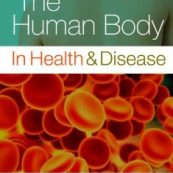
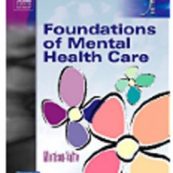
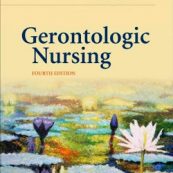
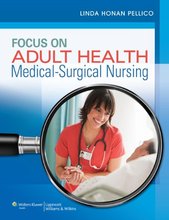
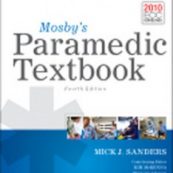
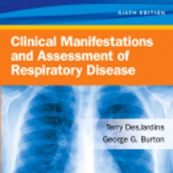
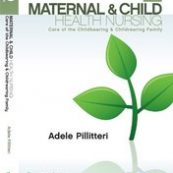
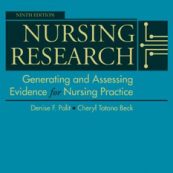
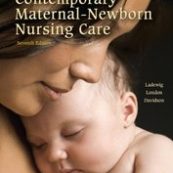

Reviews
There are no reviews yet.